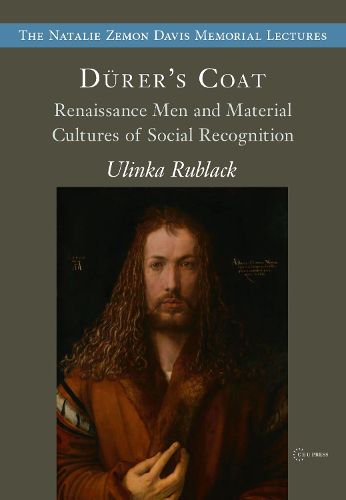Readings Newsletter
Become a Readings Member to make your shopping experience even easier.
Sign in or sign up for free!
You’re not far away from qualifying for FREE standard shipping within Australia
You’ve qualified for FREE standard shipping within Australia
The cart is loading…






During the Renaissance, clothing became more and more elaborately decorated and expensive. It often emphasised the privilege of the male elite. Yet clothing could also subvert or reshape conventional cultural norms. This book draws on the case of Albrecht Duerer to examine Renaissance male outerwear as a key element of signalling communication in everyday life. The recognised artist fought for the esteem of urban creators. In asserting his dignity and taste, outerwear was particularly important to Duerer and his time. Ulinka Rublack argues that cloaks and gowns gained in importance during this period and were among the things that mediated social relationships for centuries to come. An investigation into outerwear opens a new window into how people and things were connected in the Renaissance and how important clothing was in shaping subjectivities in everyday life.
Using the example of Duerer and his wife as emerging social types, the study follows the artist and the men and women of his time through the streets of Venice, Nuremberg, Augsburg and Antwerp. It poses pressing questions about Albrecht Duerer's entanglement in unequal networks of global trade and the German Renaissance Atlantic.
$9.00 standard shipping within Australia
FREE standard shipping within Australia for orders over $100.00
Express & International shipping calculated at checkout
During the Renaissance, clothing became more and more elaborately decorated and expensive. It often emphasised the privilege of the male elite. Yet clothing could also subvert or reshape conventional cultural norms. This book draws on the case of Albrecht Duerer to examine Renaissance male outerwear as a key element of signalling communication in everyday life. The recognised artist fought for the esteem of urban creators. In asserting his dignity and taste, outerwear was particularly important to Duerer and his time. Ulinka Rublack argues that cloaks and gowns gained in importance during this period and were among the things that mediated social relationships for centuries to come. An investigation into outerwear opens a new window into how people and things were connected in the Renaissance and how important clothing was in shaping subjectivities in everyday life.
Using the example of Duerer and his wife as emerging social types, the study follows the artist and the men and women of his time through the streets of Venice, Nuremberg, Augsburg and Antwerp. It poses pressing questions about Albrecht Duerer's entanglement in unequal networks of global trade and the German Renaissance Atlantic.